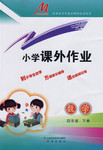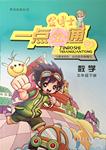题目内容
I went to the cinema this afternoon to see La La Land. Before going into the screening my sister and I visited the ladies’ washroom. As we entered, a little blonde haired girl about 5 years of age opened one of the cubicle(小隔间)doors and ran out of the washroom, hot pants in hand and looking upset and overwhelmed.
I went after her. Her dad was standing outside. She quickly gave him the hot pants to dress her. Little sweetheart. She obviously couldn't manage to button up her hot pants. Even though she had her little white tights on, she must have felt embarrassed about the lack of hot pants.
I tried to calm and reassure her, saying, “When I saw dad standing outside I knew he was waiting for someone very pretty, but I just hadn't realized how, pretty she was going to be.” She didn't bite; dad smiled though. I offered to bring her back to wash her hands.
She was too tiny to squeeze soap out of the dispenser, so I helped her. I could see poor dad out of the side of my eyes .He was right at the door looking in. I went with her to the hand dryer, but she was so tiny that the sensor couldn't even detect her little hands. I lifted her up and her hands were properly dried, well at least a little.
I was moved by this little girl’s helplessness in an adult world. I also felt for dad having to trust that his little girl would feel safe and secure for the few minutes out of his sight.
I reached out for help. I tried to bridge the gap when a little helpless girl was a few minutes without a trusted adult and a concerned father had to for a moment accept he could not give her the security he wanted for her. It wasn't much but it helped a caring father and his little daughter and for that, I'm grateful.
1.Why did the little girl catch the author's attention?
A. She got frightened by strangers.
B. She needed clothing to cover her.
C. She was probably lost in the crowd.
D. She was in an embarrassing situation.
2.Why did the hand dryer fail to work for the little girl?
A. The size of the sensor was too small.
B. She was not tall enough to reach it.
C. She didn’t know how to operate it.
D. It was drying the author's hands.
3.How did the father feel in the story?
A. Helpless. B. Shy.
C. Shameful. D. Calm
 小学课堂作业系列答案
小学课堂作业系列答案 金博士一点全通系列答案
金博士一点全通系列答案
